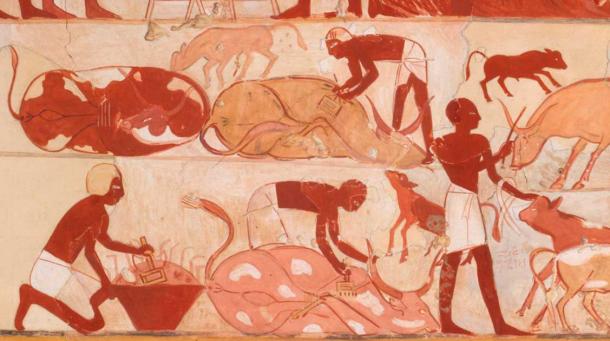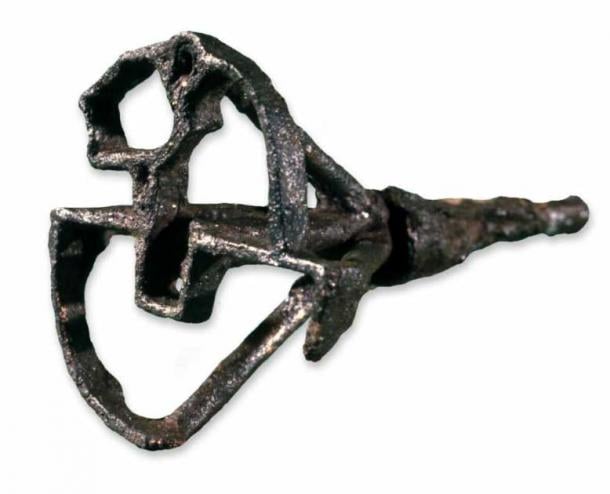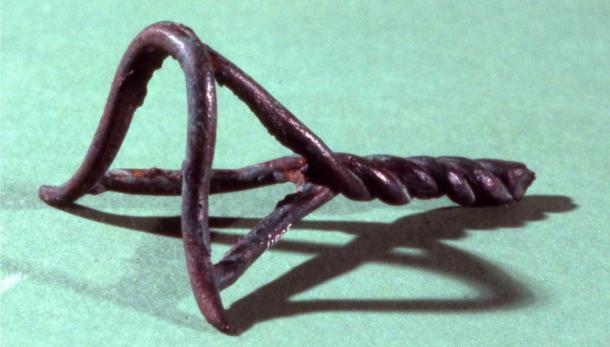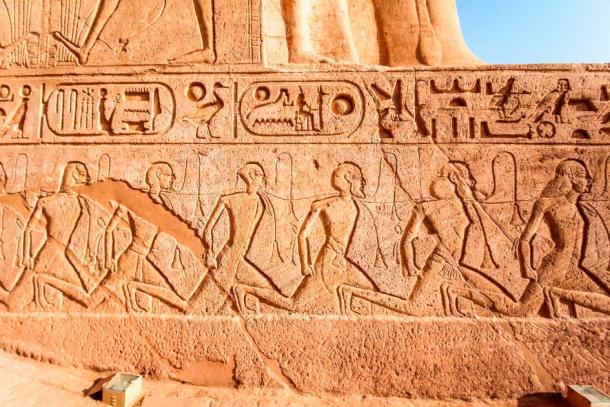Evidence Emerges that Ancient Egyptians Used Branding Irons on Human Slaves
It has long been known from carvings and tomb paintings that the ancient Egyptians used branding irons to mark their cattle. Now a new study presents evidence that they also used branding stamps on human slaves, revealing that their status was on par with other property such as cattle.

Nebamun Supervising Estate Activities, Tomb of Nebamun, men branding cattle while the tomb owner, Nebamun, looks on and a scribe records the proceedings., by Charles K. Wilkinson (Metropolitan Museum of Art / Public Domain)
The new research published in The Journal of Egyptian Archaeology reveals that ancient Egyptian texts refer to the sale and transfer of cattle and single out those that have a mark or stamp and those that don’t. There are also paintings that depict restrained oxen, a brazier for heating a branding iron, and a worker using a long-handled brand to mark the animals. Some of these branding irons, which were actually made of bronze, have also been uncovered.
Branding Slaves
However, a collection of 10 branding irons dating from Egypt’s 19 th dynasty (beginning c. 1292 BC), until the 25 th dynasty (ending 656 BC), were most likely used to mark the skin of human slaves as they were too small to use on cattle.
"They are so small that it precludes them from being used on cattle or horses," study author Ella Karev told Live Science. "I'm not excluding the possibility, but we have no evidence of small animals like goats being branded, and there is so much other evidence of humans being branded."
- The First Recorded Incident of an Escaped Slave
- From Sumerian Gods to Modern Day: The History of Slavery

Ancient Egyptian branding iron from the 18 th Dynasty. Credit: Trustees of the British Museum (CC by SA 4.0)
Branding Irons Too Small for Animals
Branding irons for cattle are typically four inches wide or larger. Any smaller than this and the mark becomes illegible as a calf grows. But a collection of small branding irons from ancient Egypt are only one third of that size – the same size as branding irons used by Europeans on human slaves in the 19 th century.
Study author Ms Karev, who is a Postdoctoral Teaching Fellow in the Humanities at the University of Chicago, also refers to textual evidence in the form of ancient Egyptian writings that talk of “marking” slaves. It has often been assumed that slaves were marked using tattoos, however, Ms Karev presents substantial evidence that tattoos in ancient Egypt were used exclusively for religious and decorative purposes, while branding was used to mark property.

Ancient Egyptian bronze branding stamp from the 18 th Dynasty. Credit: Trustees of the British Museum (CC by SA 4.0)
Slavery in Ancient Egypt
There were three types of slaves in Ancient Egypt – chattel slaves, who were mostly captives of war; bonded laborers, who were individuals that sold themselves or their children into slavery to pay off debts; and forced laborers, who were workers hired by the ancient Egyptian government. They were required to perform labour as a duty to the State, but they were paid wages for their work.

Egyptian relief of defeated and enslaved enemies at Abu Simbel temple. Source: imagoDens / Adobe Stock
Antonio Loprieno, an Egyptologist at the University of Basel in Switzerland, told Live Science that “marking” was only performed on slaves that were foreigners.
The new study suggests that, if indeed humans were branded, these foreign slaves were seen as nothing more that property or a commodity to be bought and sold.
Top image: A branding iron, representational image. Source: By ines / Adobe Stock
By Joanna Gillan




















Comments
The CIA operation, MK Ultra, found that branding as a control device was quite effective. These experiments were conducted in the 1960s.and early 1970s, after which they were supposedly discontinued and the records were deliberately destroyed. Drugs, sleep deprivation and psychological manipulation were also used in this atrocious crime.
In reality, the crime never really stopped, though. It is still influencing control techniques today. Masks, injectable nanotechnology and under-skin microchipping are modern forms of branding slaves. The first two happened without most readers or, indeed, authors on this site even realising it. The third is coming soon because the first two weren't stopped.
Welcome to slavery 2030 style, brought to us by the Occultic spiritual descendants of the Pharaohs, including some who falsely claim to be the same as some of the foreigners the Pharaohs enslaved. One thing is guaranteed. They won't tell you the truth, except when and where you won't see it or won't believe it.
When it's said that nobody is paid to tell the truth, that exact oft-repeated sentence is actually on the truthful end of the spectrum. People lie for money all of the time, especially in politics, business and the media, and the global slush fund to pay for such lies makes the enslavement ambitions of the Pharaohs look like the faint hopes of rank amateurs. And when money isn't enough, there are always entrapment, blackmail and threats.
However, it's all right. By foresight, they also invented the idea of the conspiracy theorist and pushed many false conspiracy theories so as to popularise the avoidance of researching real conspiracies. Thus, everyone can line up for the microchipping safe in belief that the trusted intelligence services have their back and are not actually sponsoring terrorism and extremism. Those that believe such a fantasy, rather than realise that there is a global government seeking to rule forever in Lucifer's name - well, they shall be slaves. Those that tell the truth shall likely be eliminated.